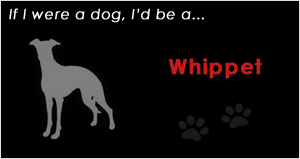A RESCUERS ANSWERING MACHINE:
Hello: You have reached ___-____, Tender Hearts Rescue. Due to the
high volume of calls we have been receiving, please listen closely to
the following options and choose the one that best describes you or
your situation:
> Press 1 if you have a 10-year-old dog and your 15-year-old son has
suddenly become allergic and you need to find the dog a new home
right away.
> Press 2 if you are moving today and need to immediately place your
150 pound, 8-year-old dog.
> Press 3 if you have three dogs, had a baby and want to get rid of
your dogs because you are the only person in the world to have a
baby and dogs at the same time.
> Press 4 if you just got a brand new puppy and your old dog is having
problems adjusting so you want to get rid of the old one right away.
> Press 5 if your little puppy has grown up and is no longer small and
cute and you want to trade it in for a new model.
> Press 6 if you want an unpaid volunteer to come to your home TODAY
and pick up the dog you no longer want.
> Press 7 if you have been feeding and caring for a "stray" for the
last three years, are moving and suddenly determine it's not your
dog.
> Press 8 if your dog is sick and needs a vet but you need the money
for your vacation.
> Press 9 if you are elderly and want to adopt a cute puppy who is not
active and is going to outlive you.
> Press 10 if your relative has died and you don't want to care for
their elderly dog because it doesn't fit your lifestyle.
> Press 11 to leave us an anonymous garbled message, letting us know
you have left a dog in our yard in the middle of January, which is
in fact, better than just leaving the dog with no message.
> Press 12 if you are going to get angry because we are not going to
take your dog that you have had for fifteen years, because it is
not our responsibility.
> Press 13 if you are going to threaten to take your ten year old dog
to be euthanized because I won't take it. (This is all too common!)
> Press 14 if you're going to get angry because the volunteers had the
audacity to go on vacation and leave the dogs in care of a trusted
volunteer who is not authorized to take your personal pet.
> Press 15 if you want one of our PERFECTLY trained, housebroken, kid
and cat friendly purebred dogs that we have an abundance of.
> Press 16 if you want us to take your dog that has a slight
aggression problem, i.e. has only bitten a few people and killed your
neighbor's cats.
> Press 17 if you have already called once and been told we don't take
personal surrenders but thought you would get a different person this
time with a different answer.
> Press 18 if you want us to use space that would go to a stray to
board your personal dog while you are on vacation, free of charge,
of course.
> Press 19 if you have bought your children a duckling, chick or baby
bunny for Easter and it is now Christmas and no longer cute.
> Press 20 if you want us to take your female dog who has already had
ten litters, but we can't spay her because she is pregnant again and
it is against your religion.
> Press 21 if your two year old male dog is marking all over your house
but you just haven't gotten around to having him neutered.
> Press 22 if you previously had an outdoor only dog and are calling
because she is suddenly pregnant.
> Press 23 if you have done "everything" to housebreak your dog and
have had no success but you don't want to crate the dog because it
is cruel.
> Press 24 if you didn't listen to the message asking for an evening
phone number and you left your work number when all volunteers are
also working and you are angry because no one called you back. >
> Press 25 if your new love doesn't like your dog and you are too
stupid to get rid of the new friend (who will dump you in the next
month anyway) instead of the dog.
> Press 26 if you went through all these 'options' and didn't hear
enough. This press will connect you to the sounds of tears being
shed by one of our volunteers who is holding a discarded old dog
while the vet mercifully frees him from the grief of missing his
family.
> ~Author Unknown, but much appreciated




 I was in the doctors office and read this very SAD news. I know it is late, but new to me........I gasped when I read about dear Daddy, and the woman next to me said "are you all right"? VERY SAD.........my condolences go out the the Millan family. There will never be a dog like Daddy!
I was in the doctors office and read this very SAD news. I know it is late, but new to me........I gasped when I read about dear Daddy, and the woman next to me said "are you all right"? VERY SAD.........my condolences go out the the Millan family. There will never be a dog like Daddy!

 Food for thought
Food for thought











































